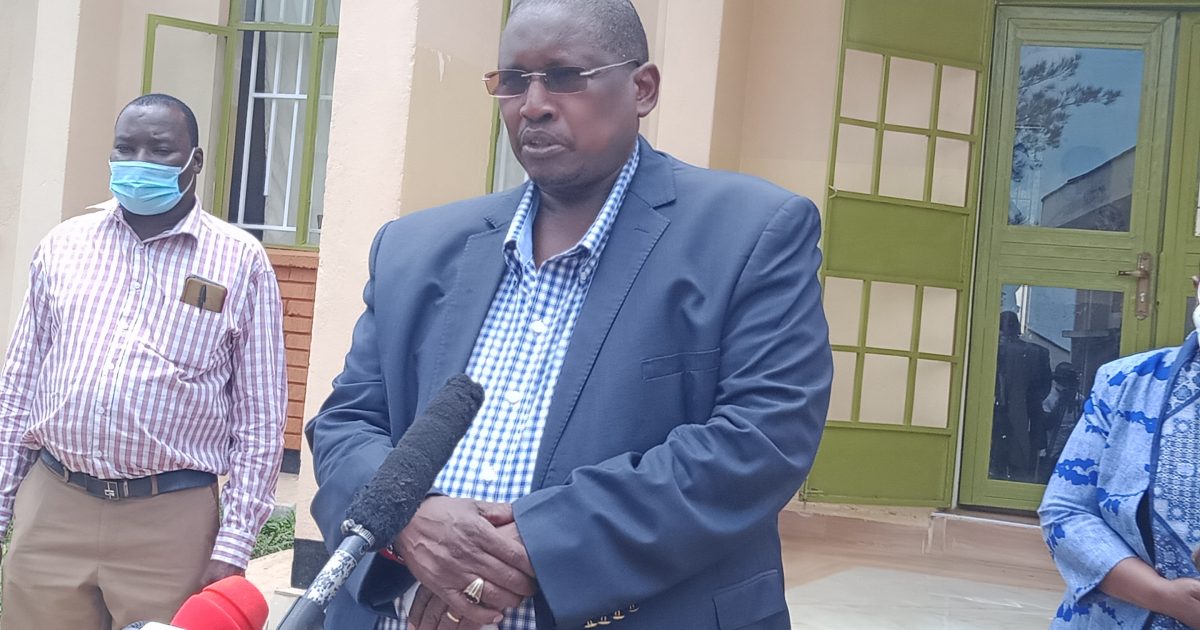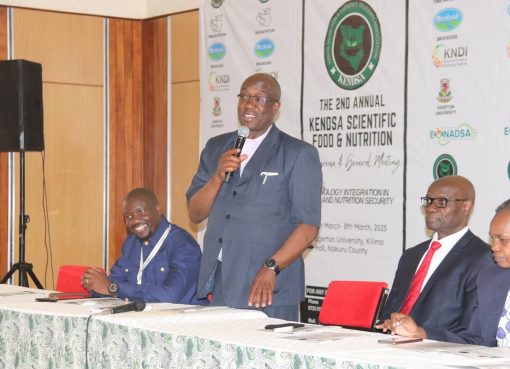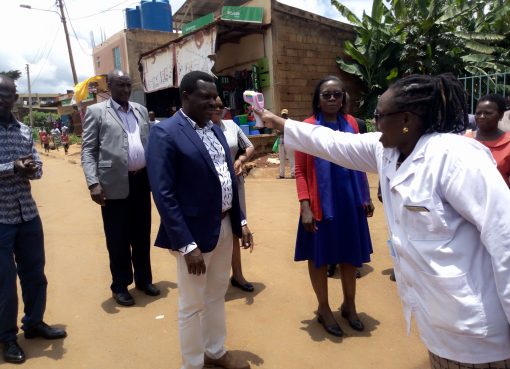Kenya Agricultural and Livestock Research Organization (KALRO) has embarked on training of trainers (TOTs) for county extension staff and service providers from counties implementing Kenya Climate Smart Agricultural Productivity (KCSAP) project activities.
Speaking on Friday at Mabanga Agricultural Training Centre, while opening a workshop for cassava value chain training of trainers from Busia, Kisumu and Lamu Counties, KALRO Director General, Dr. Eliud Kiplimo Kireger said KALRO is training TOTs on knowledge and skills to facilitate increased productivity of various crops and livestock.
Dr. Kireger said the training being undertaken in collaboration with KCSAP and funding from the World Bank and the Kenyan Government is expected to have ripple benefits on cassava production in the country.
He said that Busia, Kisumu and Lamu counties selected cassava as a priority value chain to reduce poverty, through increased incomes, improve food and nutritional security, especially for women, children, youth and vulnerable groups.
He added that the direct beneficiaries of the KCSAP project value chains both crop and livestock are about 521,500 households of smallholder farmers, agro-pastoralists and pastoralists. He further said that 163,350 households organized in about 4,950 common interest groups (CIGs) and 18,150 households in 1,100 vulnerable and marginalized groups (VMGs) will benefit from community climate smart agriculture (CSA) micro projects.
The Director General said cassava is the world’s most widely grown starch storage root crop, which accounts for a third of the total production of staple food crops in sub Saharan Africa and is the most resilient to climate change among all major African crops.
He said cassava is an important source of dietary energy for over 500 million people in developing countries and in Kenya its production level is estimated at 83,486 ha, with annual production of 1,481,518 tonnes, which translates to Sh.22.2 billion per year.
The DG added that cassava is the third most important food and cash crop in Kenya, whose potential has not been fully utilized yet it supports the livelihoods of over 2.5 million people. He said cassava is an important source of dietary energy grown mainly for its tuberous roots as food is eaten raw, boiled or processed. Cassava flour can be used for making ugali, porridge, local brew or mixed with wheat flour for home baking and the leaves are used as vegetables among many communities.
Dr Kirege went on to add that as a cash crop the tuberous roots are raw materials for animal feed, pharmaceutical substrates, textile, starch, beer brewing, confectionaries and bio-fuel industries.
“I believe that cassava is key in the attainment of Kenya’s Vision 2030 and the government big four agenda pillar on food and nutritional security. Recently the government adopted a policy proposed draft for flour blending regulations of 2018, on flour blending and cassava has been proposed and will be blended with maize or wheat for production of highly nutritious composite flour,” he said.
Dr. Kireger said some of the leading cassava production counties are Busia with a production of 256,180 tonnes valued at Sh.5, 123.59, Kilifi 107,186 tonnes valued at Sh.2, 143.72 and by Migori 107,186 tonnes valued at Sh. 1,593.03.
By Maureen Imbayi





